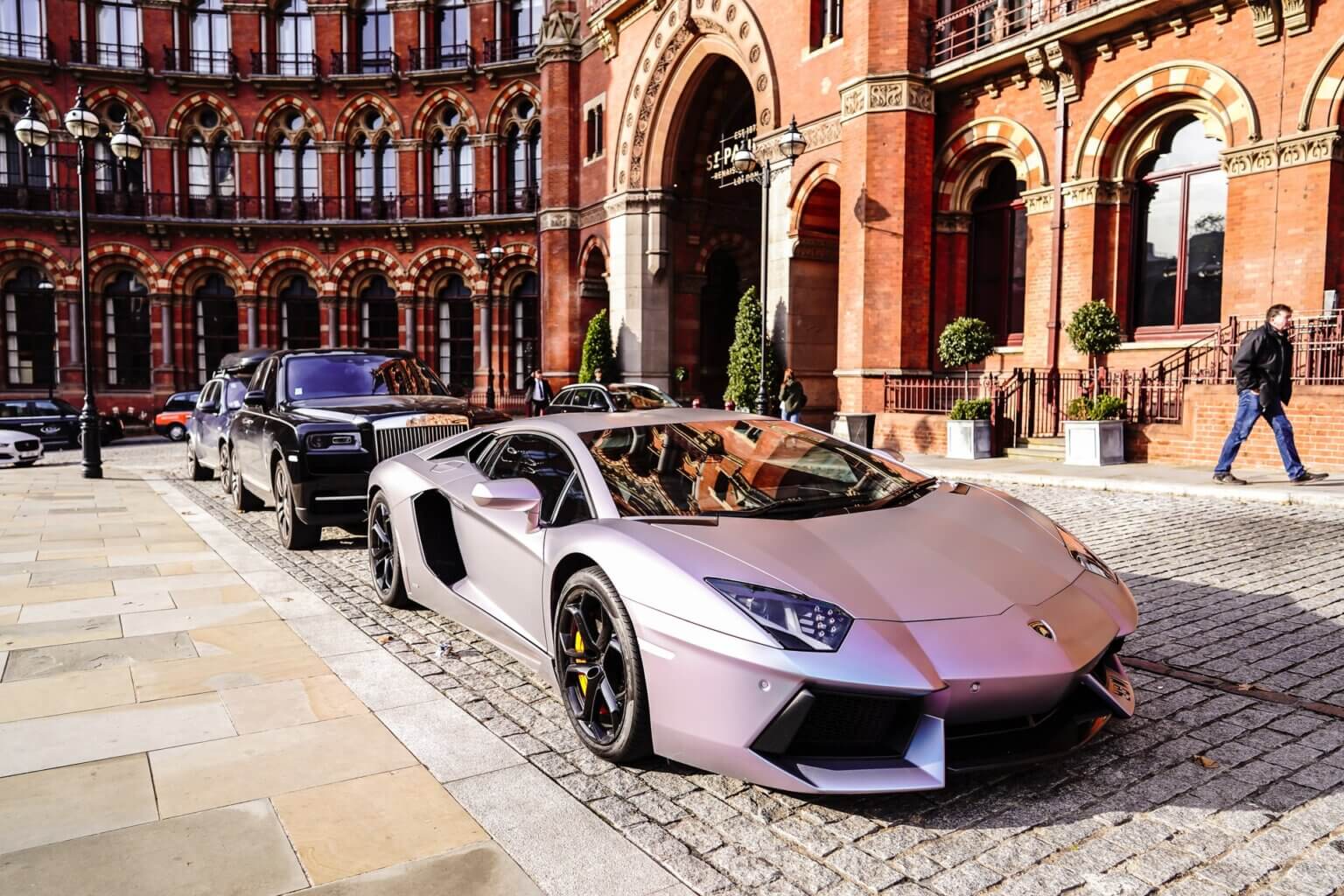In the opulent realm of luxury brands and beauty conglomerates, strategic maneuvering is akin to a high-stakes game of chess, where each move is calculated to enhance prestige, market position, and financial robustness. As we delve deeper into the strategic landscapes of giants like LVMH, Kering, Hermès, Chanel, Gucci, Richemont, and L’Oréal, the complexity of potential partnerships, acquisitions, and competitive dynamics unfolds. This exploration aims to dissect these strategies, applying rigorous strategic thinking to uncover pathways to sustained excellence and dominance in the luxury sector.
Strategic Alliances and Brand Synergy
The luxury market thrives on exclusivity and brand heritage, making strategic alliances and acquisitions not just financial decisions but carefully curated moves to preserve brand ethos while driving growth. For instance, a collaboration between Hermès and Chanel could represent a pinnacle of luxury, merging their unparalleled craftsmanship and timeless elegance. Such an alliance could co-create limited-edition collections, elevating the brand prestige and offering an unmatched value proposition to the ultra-luxury segment.
Expansion and Diversification
L’Oréal’s expertise in beauty and cosmetics presents a compelling case for strategic diversification. A partnership with fashion houses like Gucci or Louis Vuitton (part of LVMH) could redefine luxury beauty lines, marrying haute couture with high-end beauty. This synergy could extend L’Oréal’s reach into the luxury segment, while fashion brands could deepen their engagement with consumers through high-quality beauty products that reflect their fashion ethos.
Conversely, companies like Richemont, known for their exquisite jewelry and watches, might seek to diversify by exploring the burgeoning luxury lifestyle segment. Strategic investments in luxury hospitality or experiential luxury services could offer new revenue streams and enhance the brand’s lifestyle proposition, making luxury a holistic experience beyond tangible products.
Technological Innovation and Digital Excellence
In an era dominated by digital innovation, luxury brands must transcend traditional retail to offer immersive, personalized online experiences. A strategic investment or partnership with a leading tech company could catapult a brand like Chanel or Gucci into digital supremacy, offering virtual showrooms, AR-powered try-ons, and AI-driven personal shopping experiences. This digital transformation is not merely about online sales but about creating a digital aura that complements the brand’s physical prestige.
Sustainability and Ethical Luxury
Sustainability has transitioned from a niche concern to a central pillar of brand strategy in the luxury sector. Strategic collaborations focused on sustainable practices, like ethical sourcing, circular fashion, and eco-friendly packaging, could become a significant competitive advantage. A joint venture between LVMH and Kering around shared sustainability initiatives, for instance, could set new industry standards and respond to the growing consumer demand for responsible luxury.
Financial Acumen and Prudent Investments
The financial health and strategic investments of these luxury behemoths underpin their strategic maneuvers. A deep dive into their financial statements reveals not just their revenue streams and profitability but their capacity to fund innovation, expand into new markets, and weather economic uncertainties.
For LVMH, its diversified portfolio across wine and spirits, fashion and leather goods, perfumes and cosmetics, watches and jewelry, and selective retailing is a formidable strength, offering resilience against market fluctuations. Strategic acquisitions, like Tiffany & Co., further bolster its position, expanding its footprint in the high-end jewelry segment and reinforcing its presence in key markets like the U.S. and Asia.
Kering, with its strong focus on fashion and leather goods, notably through flagship brands like Gucci and Saint Laurent, could benefit from diversifying its portfolio to reduce dependency on these brands. Strategic investments in emerging luxury categories, such as wellness and luxury tech gadgets, could offer new growth avenues and appeal to younger, tech-savvy luxury consumers.
Hermès stands out for its unwavering commitment to craftsmanship and exclusivity. Financially robust, with a strong balance sheet, Hermès could explore strategic collaborations that highlight its artisanal mastery, perhaps venturing into luxury homeware or exclusive art collaborations, enhancing its lifestyle brand appeal.
Chanel, privately held and somewhat enigmatic, has the luxury of steering its course without the pressures of quarterly earnings. This autonomy could be leveraged for bold strategic moves, such as significant investments in sustainable luxury, setting industry benchmarks for environmental stewardship.
Richemont‘s prowess in jewelry and watches, with brands like Cartier and Jaeger-LeCoultre, is undisputed. However, diversification into experiences and services, perhaps through acquisitions in the luxury travel or experiential sectors, could enrich its offering, catering to the luxury consumer’s desire for unique, memorable experiences.
L’Oréal, with its comprehensive portfolio across consumer, professional, luxury, and active cosmetics, demonstrates robust financial health and a strong commitment to R&D, driving continuous product innovation. Strategic partnerships or acquisitions in biotech or sustainable beauty startups could enhance its innovation pipeline and sustainability
credentials, aligning with consumer trends towards ethical, clean beauty.
In conclusion, the strategic pathways for LVMH, Kering, Hermès, Chanel, Gucci, Richemont, and L’Oréal are as diverse as their legacies. Yet, the common threads of brand heritage, innovation, sustainability, and financial prudence weave through their strategies, guiding their quest for dominance in the global luxury landscape. As they navigate the challenges and opportunities of the 21st century, their strategic moves will continue to shape the future of luxury, setting the standards for excellence, innovation, and sustainability in one of the world’s most exclusive industries.
Strengths and weaknesses
In the luxurious tapestry of the global fashion and beauty industry, each major player—LVMH, Kering, Hermès, Chanel, Gucci (under Kering), Richemont, and L’Oréal—brings its own distinctive strengths and faces unique weaknesses. Understanding these dynamics offers insight into their strategic positions and potential future moves.
LVMH (Moët Hennessy Louis Vuitton)
Strengths:
- Diverse Portfolio: LVMH’s vast portfolio spans across various sectors including wine & spirits, fashion & leather goods, perfumes & cosmetics, watches & jewelry, and selective retailing, providing a robust buffer against sector-specific downturns.
- Brand Equity: The Group boasts an unparalleled collection of over 70 prestigious brands, including Louis Vuitton, Dior, and Fendi, each with remarkable heritage, brand loyalty, and pricing power.
- Global Reach: With a strong presence in key luxury markets like Europe, the US, and Asia, LVMH enjoys a broad and diverse customer base.
Weaknesses:
- Complex Management: Managing a conglomerate with numerous brands and diverse interests poses significant managerial challenges and requires constant strategic alignment.
- High Exposure to Consumer Sentiment: Luxury goods are often seen as discretionary spending, making LVMH vulnerable to economic downturns and shifts in consumer confidence.
Kering
Strengths:
- Focused Brand Portfolio: Kering’s focused approach, particularly on high-growth potential brands like Gucci, Saint Laurent, and Balenciaga, allows for targeted investments in brand development and marketing.
- Sustainability Leadership: Kering is a pioneer in sustainability within the luxury sector, which enhances its brand image and appeals to the socially conscious consumer.
Weaknesses:
- Dependency on Few Brands: A significant portion of Kering’s revenue is derived from a limited number of brands, particularly Gucci, making it susceptible to brand-specific challenges.
- Operational Risks: Kering’s heavy reliance on international markets, especially in Asia, exposes it to geopolitical risks and foreign exchange volatility.
Hermès
Strengths:
- Exclusive Brand Image: Hermès is synonymous with exclusivity and craftsmanship, commanding unparalleled brand loyalty and allowing for exceptional pricing power.
- Controlled Distribution: By maintaining strict control over its distribution channels, Hermès ensures a consistent and high-quality customer experience worldwide.
Weaknesses:
- Limited Diversification: Hermès’ focus on maintaining an exclusive brand image limits its product range and market segments, potentially capping broader market opportunities.
- Production Constraints: The brand’s commitment to craftsmanship means production cannot be easily scaled, leading to long waiting lists for some products which could drive impatient consumers elsewhere.
Chanel
Strengths:
- Iconic Brand Status: Chanel enjoys an iconic status in fashion and luxury, underpinned by its classic designs and the legacy of Coco Chanel.
- Integrated Supply Chain: Owning its ateliers and production units allows Chanel to closely monitor quality and supply chain, ensuring product excellence.
Weaknesses:
- Private Ownership Limitations: Being privately owned, Chanel’s financial resources for expansion and acquisition might be more limited compared to publicly traded competitors.
- Digital Presence: Chanel has traditionally been cautious in embracing e-commerce and digital channels, which could limit its reach to the younger, tech-savvy luxury consumer.
Gucci (Under Kering)
Strengths:
- Brand Renaissance: Under the creative direction of Alessandro Michele, Gucci has undergone a successful brand rejuvenation, appealing to both traditional luxury consumers and millennials.
- Innovative Marketing: Gucci’s adept use of digital marketing and social media has bolstered its brand visibility and engagement, particularly among younger demographics.
Weaknesses:
- Creative Dependency: Gucci’s current success is heavily tied to its creative leadership, making it vulnerable to potential disruptions should the creative direction change.
- Market Sensitivity: As a trend-driven brand, Gucci may be more sensitive to changes in consumer preferences and fashion trends, requiring constant innovation to stay relevant.
Richemont
Strengths:
- Specialization in Hard Luxury: Richemont’s strength lies in “hard luxury” goods such as high-end jewelry and watches, with prestigious brands like Cartier and Van Cleef & Arpels.
- Strong Retail Network: Owning a substantial retail network, including boutiques and online platforms, provides Richemont direct access to consumers and better control over the retail experience.
Weaknesses:
- Market Cyclicality: The high-end watch segment is particularly susceptible to economic cycles, affecting sales during downturns.
- Innovation Pace: The traditional nature of the high-end jewelry and watchmaking industry might limit the pace of innovation, posing challenges in attracting younger consumers.
L’Oréal
Strengths:
- Diverse Brand Portfolio: L’Oréal’s portfolio spans across consumer, luxury, professional, and active cosmetics, allowing it to serve a wide range of consumer needs and price points.
- Strong R&D Capabilities: Significant investment in research and development fuels product innovation, keeping L’Oréal at the forefront of beauty trends.
Weaknesses:
- Market Saturation: The beauty and cosmetics market is highly competitive, with numerous players vying for market share, posing a constant challenge to maintain growth and market position.
- Dependency on Retail Channels: While L’Oréal has expanded its online presence, it still relies heavily on physical retail channels, which can be affected by economic downturns or shifts in consumer shopping behavior.
In navigating the competitive and ever-evolving luxury landscape, these companies must leverage their unique strengths while addressing their vulnerabilities to maintain leadership and captivate the discerning luxury consumer.
Future perspectives
The future of leading luxury and beauty brands—LVMH, Kering, Hermès, Chanel, Gucci (under Kering), Richemont, and L’Oréal—is shaped by their ability to adapt to market disruptions, leverage technological advancements, and anticipate competitor moves. Using forecasting and prospective analysis, we can speculate on the strategic directions these companies might take and the potential market dynamics at play.
LVMH
Future Perspective: LVMH is likely to continue its strategy of brand diversification and expansion into emerging markets, particularly in Asia and Africa, where luxury consumption is growing. Technological investment, especially in AI and AR for personalized customer experiences, could become a focal point. Sustainability and ethical sourcing will become increasingly important, potentially leading LVMH to acquire or partner with sustainable materials startups.
Market Disruption Response: LVMH might face disruptions from digital-first luxury brands and platforms offering personalized and exclusive online shopping experiences. To counter this, LVMH could enhance its digital platforms, integrating them seamlessly with physical retail experiences.
Kering
Future Perspective: Kering is expected to further capitalize on the success of its powerhouse brands like Gucci and Saint Laurent while seeking to rejuvenate and reposition other brands in its portfolio. Kering could aggressively pursue digital transformation, not just in marketing and sales but also in supply chain and sustainability tracking, leveraging blockchain technology.
Market Disruption Response: The rise of niche luxury brands and changing consumer attitudes towards ownership and sustainability could disrupt Kering’s traditional brand propositions. Collaborations with avant-garde designers and investments in circular economy concepts like luxury fashion rental or resale platforms might be strategic moves.
Hermès
Future Perspective: Hermès may continue to emphasize its artisanal heritage and exclusivity but could explore innovative ways to share its brand story and craftsmanship digitally, possibly through immersive technologies like VR. While expanding geographically, Hermès will likely maintain strict control over production and distribution to preserve brand exclusivity.
Market Disruption Response: The increasing demand for personalized luxury experiences may lead Hermès to offer more bespoke services. In response to market disruptions from direct-to-consumer luxury brands, Hermès might enhance its digital storytelling and clienteling services to deepen customer engagement.
Chanel
Future Perspective: Chanel is poised to maintain its stronghold in haute couture and high-end fashion, while potentially expanding its beauty and fragrance lines. Chanel might also delve deeper into sustainability, possibly launching initiatives focused on eco-friendly materials and production methods, aligning with its high-quality brand ethos.
Market Disruption Response: Facing digital native competitors, Chanel could enhance its online presence, offering exclusive online content and services to bridge the gap between physical and digital luxury experiences. Collaboration with tech companies to offer augmented reality-based try-ons could be a forward-looking strategy.
Gucci (Under Kering)
Future Perspective: Gucci is expected to continue its trajectory of bold, eclectic designs while potentially expanding into new segments like home décor or tech accessories, capitalizing on its brand aesthetic. Gucci might also pioneer in digital fashion, exploring opportunities in virtual goods and gaming collaborations.
Market Disruption Response: As consumer preferences shift towards sustainable and ethical fashion, Gucci may intensify its focus on sustainability, possibly launching upcycled collections or initiatives that highlight artisanal craftsmanship from around the world.
Richemont
Future Perspective: Richemont’s future could see a stronger focus on integrating technology with traditional watchmaking, such as incorporating smart features into luxury watches. The group might also expand its online retail platforms, offering a more cohesive and luxurious online shopping experience.
Market Disruption Response: In response to the growing interest in experiential luxury, Richemont could develop exclusive travel and experience packages linked to its brands. Partnerships with tech firms could lead to innovative product enhancements that blend luxury with technology.
L’Oréal
Future Perspective: L’Oréal is likely to continue leading in product innovation, heavily investing in biotechnology and sustainable beauty solutions. The company might expand its digital beauty services, using AI for personalized skincare and makeup recommendations, and AR for virtual try-ons.
Market Disruption Response: As the clean beauty movement gains momentum, L’Oréal could acquire or develop more natural and organic product lines. The company might also face disruptions from personalized beauty startups, prompting L’Oréal to enhance its customization capabilities through technology and partnerships.
Each of these luxury and beauty leaders is poised to navigate the future by leveraging their unique strengths while innovatively addressing market disruptions and staying attuned to the evolving luxury landscape. Their ability to anticipate and react to both consumer trends and competitor moves will be crucial in sustaining their market dominance and driving future growth.
Main Threats
For luxury and beauty giants like LVMH, Kering, Hermès, Chanel, Gucci, Richemont, and L’Oréal, navigating the future landscape involves not only capitalizing on their strengths and opportunities but also mitigating potential threats and disruptions. These can arise from various fronts, including market dynamics, technological advancements, and broader PESTEL factors (Political, Economic, Social, Technological, Environmental, and Legal).
Market Threats:
- Changing Consumer Preferences: The shift towards sustainability, ethical production, and transparency in the luxury market demands a reevaluation of sourcing, production, and branding strategies.
- Economic Volatility: Economic downturns can lead to reduced consumer spending on luxury goods, affecting sales and profitability.
- Increased Competition: The rise of niche luxury brands and direct-to-consumer models can erode market share and challenge established players.
- Counterfeit Goods: The proliferation of counterfeit products can damage brand reputation and result in revenue loss.
PESTEL Disruptions:
- Political: Geopolitical tensions and trade wars can disrupt global supply chains and affect international sales, particularly in key luxury markets like China and the US.
- Economic: Fluctuating exchange rates and economic sanctions can impact profitability and operational costs, especially for companies heavily reliant on international markets.
- Social: The growing demand for social responsibility and inclusivity in branding and product offerings requires companies to adapt their strategies to align with societal values.
- Technological: Rapid advancements in technology necessitate continuous investment in digital platforms, e-commerce, and cybersecurity to meet consumer expectations and stay competitive.
- Environmental: Climate change and environmental degradation are pushing companies towards sustainable practices, from sourcing to packaging and beyond. Failure to adapt could result in consumer backlash and regulatory penalties.
- Legal: Stricter regulations on data privacy, labor practices, and environmental standards can impose additional operational costs and necessitate significant changes in business practices.
Technology Disruptions:
- E-Commerce and Digital Platforms: The continued evolution of online retail and social commerce platforms challenges traditional retail models, requiring luxury brands to enhance their digital presence and omnichannel strategies.
- Artificial Intelligence and Big Data: AI and big data analytics can revolutionize personalized marketing, customer insights, and supply chain efficiency but require significant investment in technology and talent.
- Blockchain: Blockchain technology offers potential in authenticity verification and supply chain transparency but necessitates a reconfiguration of existing systems and processes.
- Augmented Reality and Virtual Reality: AR and VR technologies can enhance the online shopping experience but require brands to develop new capabilities and content to engage consumers effectively.
- Sustainable Technologies: Innovations in sustainable materials and production processes are crucial for meeting environmental commitments but may involve significant R&D expenditure and operational adjustments.
To navigate these threats and disruptions, luxury and beauty companies must remain agile, continuously scanning the horizon for emerging trends and technological advancements. Strategic investments in innovation, sustainability, and digital transformation, coupled with a keen understanding of global socio-economic shifts, will be pivotal in maintaining competitiveness and ensuring long-term resilience in the ever-evolving luxury market landscape.
Main opportunities
For luxury and beauty powerhouses like LVMH, Kering, Hermès, Chanel, Gucci (under Kering), Richemont, and L’Oréal, the evolving market landscape presents a plethora of opportunities for growth, innovation, and enhanced consumer engagement. These opportunities, if leveraged effectively, can pave the way for sustained success and expansion.
1. Digital Transformation and E-commerce Expansion
- Opportunity: With the acceleration of digital retail, there’s significant potential in enhancing e-commerce platforms, adopting AR/VR for virtual try-ons, and leveraging AI for personalized shopping experiences.
- Strategic Action: Invest in digital infrastructure, forge partnerships with tech companies, and develop innovative online engagement strategies to blend the luxury experience with digital convenience.
2. Sustainability and Ethical Practices
- Opportunity: Growing consumer awareness around sustainability and ethical production opens avenues for brands to lead in eco-friendly practices, sustainable sourcing, and transparent supply chains.
- Strategic Action: Implement and communicate sustainable initiatives, invest in green technologies, and collaborate with environmental organizations to position the brand as a leader in sustainable luxury.
3. Emerging Markets and Demographics
- Opportunity: Expanding into emerging luxury markets like China, India, and the Middle East, and catering to the preferences of younger demographics, including Millennials and Gen Z, who value experiences and personalization.
- Strategic Action: Tailor product offerings and marketing strategies to local tastes and preferences, develop products and experiences that resonate with younger consumers, and invest in market-specific retail and digital platforms.
4. Diversification and Brand Extensions
- Opportunity: Exploring new product categories, services, or experiences that align with the brand’s heritage and expertise, such as branching into luxury hospitality, wellness, or tech accessories.
- Strategic Action: Conduct market research to identify promising new categories, develop pilot projects or partnerships to test the market, and leverage brand equity to ensure a successful launch.
5. Personalization and Customization
- Opportunity: Leveraging data analytics and customer insights to offer personalized products, services, and shopping experiences, enhancing customer loyalty and engagement.
- Strategic Action: Invest in CRM systems and analytics capabilities, offer bespoke and made-to-order services, and use customer data to tailor marketing and product development efforts.
6. Collaborations and Limited Editions
- Opportunity: Collaborating with artists, designers, celebrities, or other brands to create buzz, attract new customer segments, and offer unique products that generate excitement and press coverage.
- Strategic Action: Identify potential collaboration partners that align with the brand’s image and values, co-create exclusive products or experiences, and leverage social media and influencer marketing to maximize reach and impact.
7. Technological Innovations
- Opportunity: Adopting new technologies such as blockchain for authentication and transparency, biotechnology for sustainable materials, and AI for customer service and operational efficiency.
- Strategic Action: Establish innovation labs or partnerships with startups to explore new technologies, pilot innovative projects, and integrate successful technologies into operations and customer offerings.
By seizing these opportunities with strategic foresight and innovation, luxury and beauty brands can reinforce their market leadership, captivate consumers with memorable experiences, and navigate the dynamic global landscape with agility and vision.
Main customer experience improvements
Improving customer experience is pivotal for luxury and beauty brands like LVMH, Kering, Hermès, Chanel, Gucci, Richemont, and L’Oréal, as it directly impacts brand loyalty, reputation, and ultimately, profitability. Enhancing customer experience in the luxury sector involves a blend of personalized service, seamless omnichannel interactions, and exclusive, memorable encounters. Here are key areas for customer experience improvement:
Personalization and Customization
- Strategy: Leverage data analytics and AI to understand individual customer preferences and tailor interactions, product recommendations, and services accordingly.
- Implementation: Use CRM systems to create detailed customer profiles and deliver personalized marketing messages, product suggestions, and exclusive offers.
Omnichannel Experience
- Strategy: Ensure a consistent and seamless brand experience across all channels, from brick-and-mortar stores to online platforms and social media.
- Implementation: Integrate online and offline data to provide a unified customer view, enabling customers to smoothly transition between channels (e.g., online reservation for in-store experiences, or in-store assistance for online purchases).
Exclusive In-Store Experiences
- Strategy: Reinvent the physical retail space to offer unique, immersive experiences that cannot be replicated online.
- Implementation: Host exclusive events, offer personalized shopping appointments, and utilize technology like AR and VR to enhance the in-store experience.
After-Sales Service and Loyalty Programs
- Strategy: Cultivate long-term relationships with customers through exceptional after-sales service and rewarding loyalty programs.
- Implementation: Offer premium after-sales services (e.g., complimentary repairs, personal shopping assistance), and create loyalty programs that offer truly valuable rewards, such as exclusive access to products or events.
Digital Engagement and E-Commerce Excellence
- Strategy: Elevate the online shopping experience to match the luxury and exclusivity of the brand.
- Implementation: Invest in high-quality digital content, user-friendly website design, and responsive customer service channels online. Implement AR for virtual try-ons and AI chatbots for instant customer service.
Sustainable and Ethical Practices
- Strategy: Align with the growing consumer demand for sustainability and ethical business practices by integrating these values into the customer experience.
- Implementation: Communicate the brand’s sustainability efforts transparently, offer sustainable product lines, and consider sustainable packaging options to enhance the unboxing experience.
Experiential Marketing and Storytelling
- Strategy: Use storytelling to create emotional connections with customers, making every interaction with the brand an engaging narrative.
- Implementation: Utilize content marketing, social media, and experiential events to tell the brand’s story, its heritage, craftsmanship, and values, making customers feel like they are part of something special.
Technology-Enhanced Service
- Strategy: Utilize technology to enhance service efficiency and convenience, without losing the personal touch that defines luxury.
- Implementation: Use apps for personal shopping appointments, leverage RFID/NFC for seamless payments and interactions, and provide high-tech solutions for product care and maintenance.
By focusing on these key areas, luxury and beauty brands can elevate the customer experience, ensuring that every touchpoint reflects the brand’s ethos of exclusivity, quality, and exceptional service. This not only meets the high expectations of luxury consumers but also fosters brand loyalty and advocacy in an increasingly competitive market.
New entrants threats
The luxury and beauty sectors are evolving rapidly with the entry of new market players that leverage digital innovation, sustainability, and direct-to-consumer models. These entrants are redefining competition and consumer expectations, prompting traditional brands to rethink their strategies. Here’s an in-depth look at these new entrants, with examples to illustrate the emerging competitive landscape:
Digital-Native Luxury Brands
- Characteristics: These brands are adept at online engagement and e-commerce, utilizing digital platforms for marketing and sales, often focusing on niche luxury markets.
- Example: Glossier has capitalized on its strong online presence and direct engagement with consumers through social media to become a beauty powerhouse, challenging established players like L’Oréal and Chanel in the beauty segment.
Sustainable and Ethical Luxury Brands
- Characteristics: Centered around sustainability and ethical practices, these brands meet the growing demand for responsible luxury.
- Example: Stella McCartney has been a pioneer in sustainable luxury fashion, using eco-friendly materials and promoting ethical production, influencing others like Gucci and Hermès to incorporate more sustainable practices.
Direct-to-Consumer (DTC) Brands
- Characteristics: Selling directly to consumers, often online, allows these brands to offer quality products at more accessible price points.
- Example: Warby Parker disrupted the luxury eyewear market dominated by giants like Luxottica by offering stylish, high-quality glasses through a DTC model, compelling traditional brands to reconsider their retail strategies.
Collaborative and Co-Created Luxury
- Characteristics: Emphasizing collaboration, these brands co-create products with consumers, influencers, or other brands, leading to innovative and personalized offerings.
- Example: Nike x Off-White collaborations have seen immense success, blending streetwear with luxury and setting a precedent for brands like Louis Vuitton to explore similar high-profile collaborations (e.g., Louis Vuitton x Supreme).
Tech-Integrated Luxury Brands
- Characteristics: These brands incorporate smart features into luxury products or use technology to enhance customer experiences.
- Example: Ringly smart jewelry and Tag Heuer Connected watches combine luxury aesthetics with smart functionalities, challenging traditional luxury accessory brands to integrate technology into their offerings.
Experiential and Service-Oriented Luxury
- Characteristics: Focusing on providing luxurious experiences and services, these brands cater to consumers who value unique, memorable encounters over physical goods.
- Example: Airbnb Luxe offers high-end travel experiences, providing unique stays and full-service trips, pushing traditional luxury brands like Richemont, known for its Cartier and Van Cleef & Arpels jewelry brands, to consider expanding into experiential luxury.
Artisanal and Craft-Centric Brands
- Characteristics: Highlighting craftsmanship, heritage, and artisanal production, these brands appeal to those seeking authenticity in luxury goods.
- Example: Shinola emphasizes its ‘Made in America’ craftsmanship in watches and leather goods, appealing to consumers’ desire for heritage and authenticity, and nudging established luxury watchmakers like those under Richemont to emphasize their own artisanal heritage.
For traditional luxury and beauty brands, adapting to this new competitive environment involves embracing digital channels, enhancing sustainability, adopting DTC models, and integrating innovative technologies. Partnerships or acquisitions of promising new entrants can also be strategic moves for established brands like Chanel or Hermès, allowing them to infuse fresh ideas and technologies into their venerable luxury portfolios.
Market trends impact per geography
Market trends in the luxury and beauty sectors exhibit unique characteristics across different geographies, influenced by cultural, economic, and social factors. Understanding these trends and their impacts is crucial for global players like LVMH, Kering, Hermès, Chanel, Gucci, Richemont, and L’Oréal to tailor their strategies effectively for each market.
North America
- Trend: The rise of casual luxury and streetwear, coupled with a strong emphasis on sustainability and ethical brands.
- Impact: Luxury brands are adapting by incorporating more casual and streetwear-inspired pieces into their collections (e.g., Gucci’s collaboration with Dapper Dan) and highlighting their sustainability efforts to appeal to the socially conscious North American consumer.
Europe
- Trend: Heritage and craftsmanship continue to hold significant value, with a growing interest in experiential luxury.
- Impact: Brands with strong heritage, like Hermès and Chanel, thrive by emphasizing their artisanal craftsmanship. Additionally, there’s an increasing focus on offering unique brand experiences, from private tours to exclusive events, to engage European consumers.
Asia-Pacific (notably China and Japan)
- Trend: A booming luxury market with a high demand for premium beauty products and digitally integrated shopping experiences.
- Impact: Luxury and beauty brands are ramping up their digital presence and e-commerce capabilities to cater to the tech-savvy Asian market. For example, L’Oréal’s AR beauty app, ModiFace, offers virtual makeup try-ons, resonating well with consumers in Asia who are keen on digital innovations.
Middle East
- Trend: High demand for personalized luxury services and products, with a significant interest in niche and exclusive fragrances.
- Impact: Personalization and exclusivity become key, with brands like Louis Vuitton offering bespoke services and expanding their exclusive fragrance lines to cater to the Middle Eastern consumer’s preference for unique and personalized luxury items.
Latin America
- Trend: Growing luxury market with a keen interest in international luxury brands, amidst economic fluctuations.
- Impact: Despite economic volatility, the demand for luxury goods remains strong. Brands are navigating this landscape by enhancing their retail presence and offering localized services to build loyalty among Latin American consumers.
Africa
- Trend: Emerging luxury market with a growing middle and upper class, showing an interest in luxury fashion and beauty products, alongside a strong preference for mobile e-commerce.
- Impact: Brands are exploring opportunities in key African markets, focusing on mobile-friendly online shopping experiences and leveraging local influencers and pop-up events to increase brand visibility and engagement.
Across these geographies, the overarching trends of digitalization, sustainability, and personalization are shaping the strategies of luxury and beauty brands. Adapting to local market nuances while maintaining brand integrity is crucial for these brands to capture diverse consumer segments and navigate the complex global luxury landscape successfully.
Main innovations and transformations to apply
Innovation and transformation in the luxury and beauty sectors are imperative for staying relevant in a rapidly evolving market landscape. For giants like LVMH, Kering, Hermès, Chanel, Gucci, Richemont, and L’Oréal, this entails not only embracing new technologies and trends but also staying true to their heritage and core brand values. Here’s how each company can innovate and transform:
LVMH
- Innovation in Sustainability: Develop a sustainability innovation lab to pioneer new eco-friendly materials and production techniques across its brand portfolio, setting industry standards for luxury sustainability.
- Digital Experiences: Enhance customer engagement through AR and VR, offering virtual showrooms and immersive experiences that blend the digital with the tactile luxury experience.
Kering
- Blockchain for Transparency: Implement blockchain technology to enhance supply chain transparency and authenticity verification, particularly for high-value items like Gucci and Saint Laurent products.
- Data-Driven Personalization: Leverage big data and AI to offer hyper-personalized products and services, from customized fashion pieces to tailored skincare routines.
Hermès
- Artisanal Innovation: Establish an ‘Artisan Incubator’ to foster innovation in traditional craftsmanship, encouraging artisans to explore new materials, techniques, and designs while preserving the brand’s heritage.
- Experiential Retail: Transform retail spaces into cultural hubs, hosting art exhibitions, workshops, and talks that immerse customers in the Hermès universe beyond the purchase.
Chanel
- Beauty Tech: In the beauty segment, Chanel can invest in biotechnology for developing advanced skincare formulations and in tech-driven tools for color cosmetics customization.
- Circular Fashion Initiatives: Launch a program for recycling or repurposing Chanel products, reinforcing the brand’s commitment to luxury sustainability and extending the lifecycle of its iconic pieces.
Gucci (under Kering)
- Digital Fashion and NFTs: Explore the digital fashion space by creating virtual clothing and accessories for online platforms and games, possibly venturing into NFTs for exclusive digital collectibles.
- Gucci Lab for Innovation: Create a cross-disciplinary innovation lab that brings together designers, technologists, and sustainability experts to ideate future-forward fashion concepts.
Richemont
- Smart Luxury: Integrate smart technology into traditional watchmaking, developing luxury smartwatches or hybrid models that offer connectivity without compromising on design and craftsmanship.
- Customer Service Revolution: Implement AI-powered customer service solutions, offering 24/7 assistance and personalized advice for high-jewelry and watch purchases.
L’Oréal
- Sustainable Beauty Solutions: Focus on green chemistry to develop sustainable and effective beauty products, reducing environmental impact without compromising performance.
- Augmented Reality and AI: Expand the use of AR and AI across all brands for virtual try-ons, skin diagnostics, and personalized product recommendations, enhancing the online shopping experience.
For these companies, innovation and transformation must be a balanced blend of respecting heritage and embracing the future. Whether through technological advancements, sustainability efforts, or new customer engagement strategies, staying ahead requires a proactive approach to innovation, grounded in the brand’s core identity and values.
Potential Acquisitions and LBO
Identifying potential acquisition targets or leveraged buyout (LBO) opportunities for luxury and beauty giants requires a strategic analysis of how these targets could complement existing portfolios, enhance market position, or drive innovation. Here’s a closer look at potential targets for LVMH, Kering, Hermès, Chanel, Gucci, Richemont, and L’Oréal, along with the rationale behind each choice:
LVMH
Potential Acquisition: Aesop
- Rationale: Aesop’s premium skincare and personal care products could complement LVMH’s existing beauty segment. Aesop’s strong emphasis on design and sustainability aligns with LVMH’s luxury ethos and its growing focus on sustainable practices.
Potential LBO: Rimowa
- Rationale: LVMH already owns 80% of Rimowa, a luxury luggage brand. Completing a buyout could allow LVMH to fully integrate Rimowa’s innovative luggage solutions with its fashion and leather goods segments, enhancing cross-brand collaborations and synergies.
Kering
Potential Acquisition: Stone Island
- Rationale: Kering’s focus on high-end fashion brands could be complemented by acquiring Stone Island, known for its high-tech fabric innovation in menswear. This would appeal to younger consumers and expand Kering’s presence in the luxury sportswear market.
Potential LBO: Balenciaga
- Rationale: While already under Kering, conducting an LBO for Balenciaga could provide the brand with more autonomy to push the boundaries of high fashion and digital innovation, further cementing its status as a trendsetter.
Hermès
Potential Acquisition: Brunello Cucinelli
- Rationale: Acquiring Brunello Cucinelli, known for its cashmere products and ethical approach to luxury fashion, would align with Hermès’s commitment to craftsmanship and sustainability, enriching its apparel segment.
Potential LBO: Not Applicable
- Rationale: Given Hermès’s family ownership and its cautious growth strategy, an LBO doesn’t align with its corporate ethos and long-term vision.
Chanel
Potential Acquisition: Byredo
- Rationale: Chanel could benefit from acquiring Byredo, a niche luxury fragrance and beauty brand. Byredo’s unique scents and minimalist design could complement Chanel’s beauty line, attracting a younger, more avant-garde clientele.
Potential LBO: Not Applicable
- Rationale: Chanel’s private ownership and conservative approach to acquisitions make an LBO scenario unlikely and not in line with its strategic focus.
Gucci (under Kering)
Potential Acquisition: Off-White
- Rationale: Acquiring Off-White would solidify Gucci’s (and Kering’s) foothold in the luxury streetwear segment, bringing in Virgil Abloh’s creative vision and further appealing to millennial and Gen Z consumers.
Potential LBO: Not Applicable
- Rationale: Gucci, being part of the Kering group, wouldn’t typically engage in LBOs as it operates under the conglomerate’s strategic direction.
Richemont
Potential Acquisition: Ulysse Nardin
- Rationale: Richemont, with its strong portfolio of luxury watch brands, could further bolster its offerings by acquiring Ulysse Nardin. Known for its innovation in watchmaking, Ulysse Nardin would complement Richemont’s existing brands like Cartier and Jaeger-LeCoultre.
Potential LBO: Peter Millar
- Rationale: Conducting an LBO of Peter Millar, a luxury golf apparel brand, could allow Richemont to diversify into luxury sportswear, tapping into the growing market of lifestyle luxury consumers.
L’Oréal
Potential Acquisition: The Ordinary (Deciem)
- Rationale: Acquiring The Ordinary would allow L’Oréal to expand its portfolio in the clinical skincare market, appealing to consumers looking for effective, science-backed skincare solutions at an accessible price point.
Potential LBO: Not Applicable
- Rationale: L’Oréal’s strategy typically focuses on acquisitions to enhance its product portfolio and market reach, rather than engaging in leveraged buyouts.
For these companies, acquisitions and LBOs must strategically align with their long-term visions, market positions, and brand values. The focus is not just on financial viability but also on how these targets can bring innovation, market expansion, and brand enhancement to ensure sustained growth and competitiveness in the luxury and beauty sectors.












About The Author
Janus Andersen
Advice on Strategy | Innovation | Transformation | Leadership Helping growth strategies and M&A transactions for 20 years